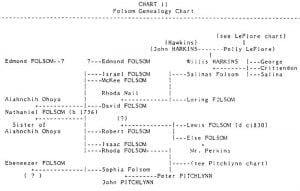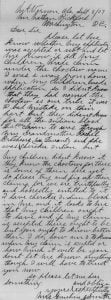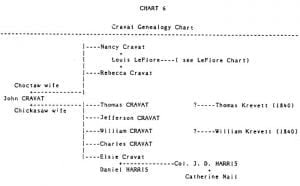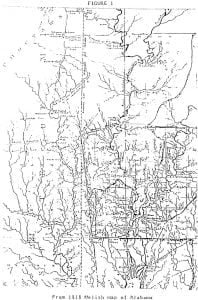Folsom Choctaw Family – List of Mixed Bloods
The Folsom family is easily one of the best known of all mixed-blood groups (see Charts 10 and 11). Their earliest members in Choctaw country were reputedly the three brothers Edmond, Ebeneezer, and Nathaniel who migrated through Indian country with their parents prior to the American Revolution. According to Cushman: “Nathaniel Folsom married Aiahnichih Ohoyo (A woman to prefer above all others). She was a niece of Miko Puskush (Infant Chief), who was the father of Moshulatubbee. She descended from a long ancient line of chiefs, and belonged to the ancient lksa Hattakiholihta, one of the two great families, the … Read more






